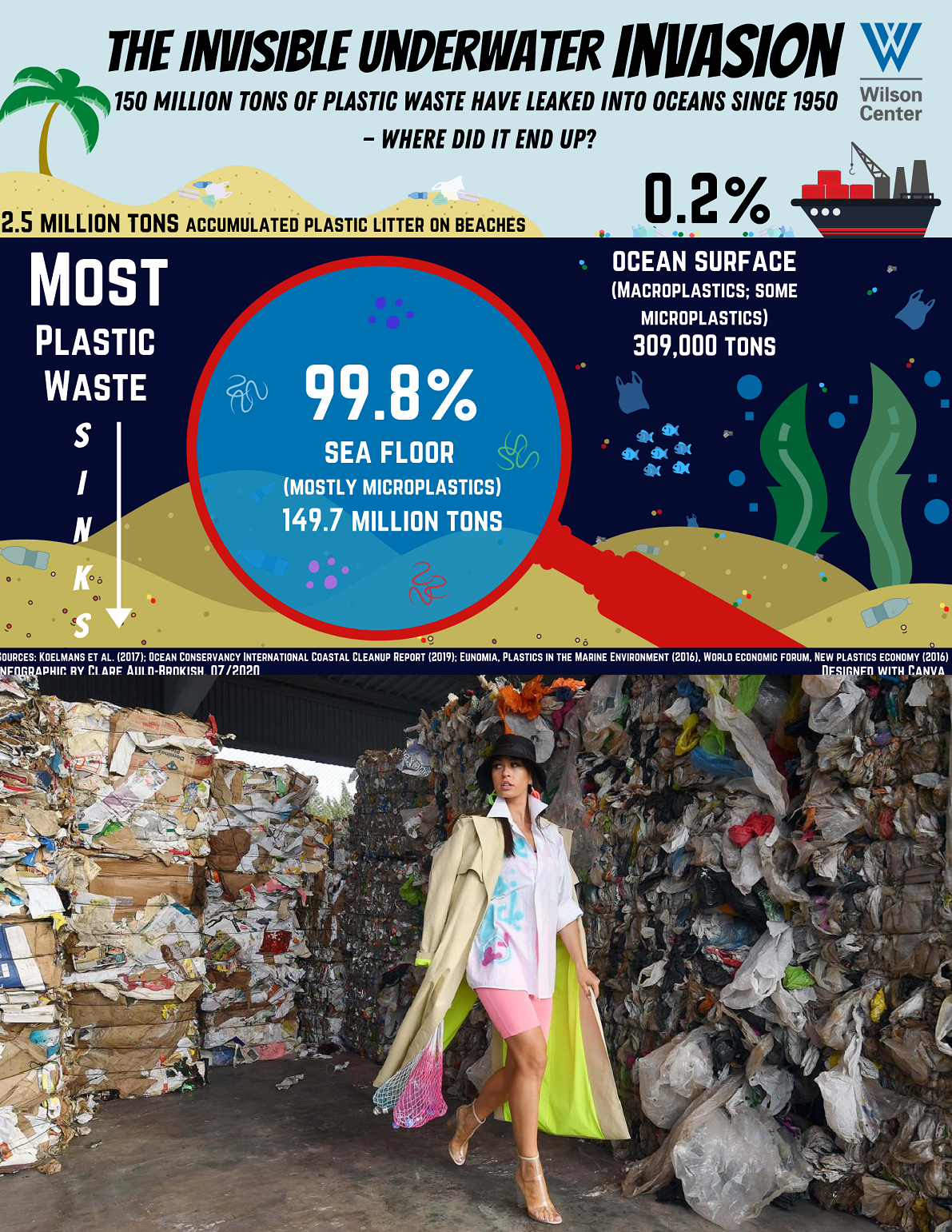Tom Ford and 52HZ Launch a $1.2 Million Prize for Biodegradable Poly Bag Replacement
/Everywhere we look, humans exist in a metaphorical sea of plastic. While that plastic comes in many forms, designer Tom Ford’s focus is “thin-film” and the estimated 300 billion polybags and single-use, resealable sandwich and storage bags (SRPBs) used every year.
If you believe that your plastic bags are recylced - because you dump them in the recycle bin — reality is that they probably are not recycled. All of those plastic bags end up in landfills or on the ground and in our oceans. Reality is sobering — so sobering that Tom Ford has launched the Plastic Innovation Prize in partnership with 52HZ.
The Deadly Statistics Around Plastic in our Oceans
Plastic films make up 5 million metric tons of ocean leakage, or a full 46% of all ocean plastic leakage.
It is estimated that there are 14 million metric tons of plastic on the ocean floor today that will be nearly impossible to extract.
11 million metric tons of new plastic enters the ocean every year. That number is expected to almost triple to 29 million metric tons by 2040 — the equivalent of 241 Washington Monuments.,
Plastic in the ocean will only continue to endanger countless species and ecosystems already affected by increased warming, acidification, and other stressors.
It’s very possible that these estimates are understated. An Oct. 19, 2020 blog post from Harvard University explained that the 14 million metric tons estimate comes from researchers Justine Barrett, Chris Wilcox, and their team at the Commonwealth Scientific and Industrial Research Organisation (CSIRO), an Australian Government agency. The team quantified the amount of microplastics in the Great Australian Bight, a large ocean area south of Australia that is home to many marine species. The researchers utilized a remotely operated vehicle to collect samples from around 1600 to 3000 meters deep in the ocean.
Similar explorations have resulted in higher estimates of plastic pollution, probably driven by their locations nearer to higher-density population areas. There’s little dispute that the Great Australian Bight is a comparatively remote location and probably not a representative example of the worldwide, plastic pollution in our oceans.
Closer to home in America, a new report released on May 17, urges California to act to protect marine ecosystems against microplastics. Eunha Hoh, San Diego State University environmental health scientist and professor of public health, served as co-chair of a working group of leading interdisciplinary experts who developed the 68-page report.
Tom Ford’s concern about plastic pollution is not new. In 2020, Ford brought the ‘Tom Ford Ocean Plastic Watch’ to market, launching the world’s very first luxury watch made from 100% marine plastic from the ocean, coastal areas and uncontrolled landfills.
It was inspiring to think that every timepiece made in Switzerland permanently removes the equivalent of 35 bottles of plastic waste. For every 1000 watches sold, the ocean will be saved from 490 pounds of plastic waste. The gesture was authentic and worthy of celebration.
Except that the problem is overwhelming. Current estimates are that in 2050, there will be more plastic in the world’s oceans than fish. Ford worked with 52HZ, the advisory arm to Adrian Grenier’s organization Lonely Whale, in the development of his watch. The same team has now launched the Tom Ford Plastic Innovation Prize.
The new competition will create a major incentive for designers, manufacturers, and inventors to create a biodegradable alternative to thin-film plastic. This new bag would naturally degrade in the soil or ocean without human intervention.
The grand prize is $1.2 million, with support from the prize’s investors to bring it to the market by 2025. Submissions opened Thursday, May 20.
Ford is seeking an answer for the massive problem of plastic in the same innovation story line that saw its creation as plastics resin in 1869. John Wesley Hyatt won the Phelan & Collender prize for inventing the world’s first plastic—celluloid—to replace ivory in billiard balls..
Ford’s Plastic Innovation Price website explains that 150 years ago, ivory was already becoming scarce, with elephant populations declining. That historical fact is a mind-stretcher, and the Smithsonian says that Hyatt never received his winning $10,000 prize. But concerns about the future supply of ivory — and specifically for billiard balls — inspired Hyatt’s inventive solution to another sustainability challenge.
“As a campaign organization capable of catalyzing global change on a massive scale, the Tom Ford Plastic Innovation Prize is an opportunity to create another new beginning and promote solutions commensurate with the plastic pollution problem,” Dr. Dune Ives, the CEO of Lonely Whale, explains in a release.
An impressive panel of judges will work on the project with Ford. They include Dr. Andrew Forrest, the founder and Chairman of Fortescue Metals Group and Minderoo Foundation; Loop founder Tom Szaky; designer Stella McCartney; Eco-Age’s Livia Firth; youth activist Melati Wijsen; Audrey Choi, the chief sustainability officer at Morgan Stanley; and several others. Numerous other experts will advise on feasibility and product development, in concert with the Bioseniatic SM Laboratory at the UGA New Materials Institute, in charge of conducting field tests.
“There is so much creativity, talent, and innovation out there in the world, and it just takes one amazing idea and the drive to tap into one’s potential to make the impossible possible,” Ford says. “I would encourage all inventors who feel passionate about the cause to really believe in their ability to change the world. The environment is in desperate need of a solution for plastic waste, so it is up to us to come together to develop an innovative solution to make the environment a safer place for generations to come.”
Submissions are open through October 24, at www.plasticprize.org.
Related: Investigation finds plastic from the UK and Germany illegally dumped in Turkey Greenpeace May 17, 2021


